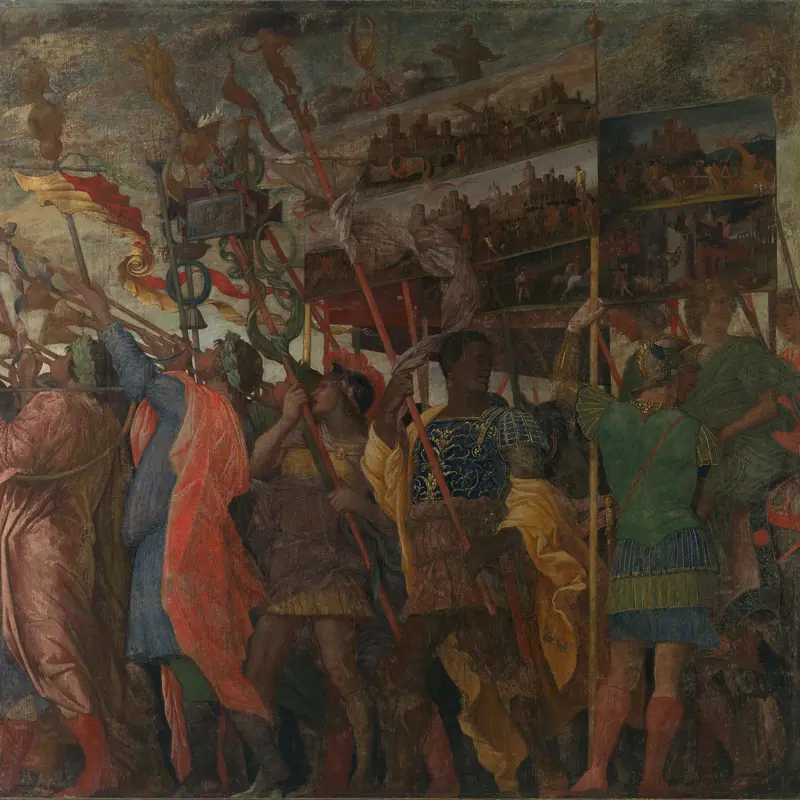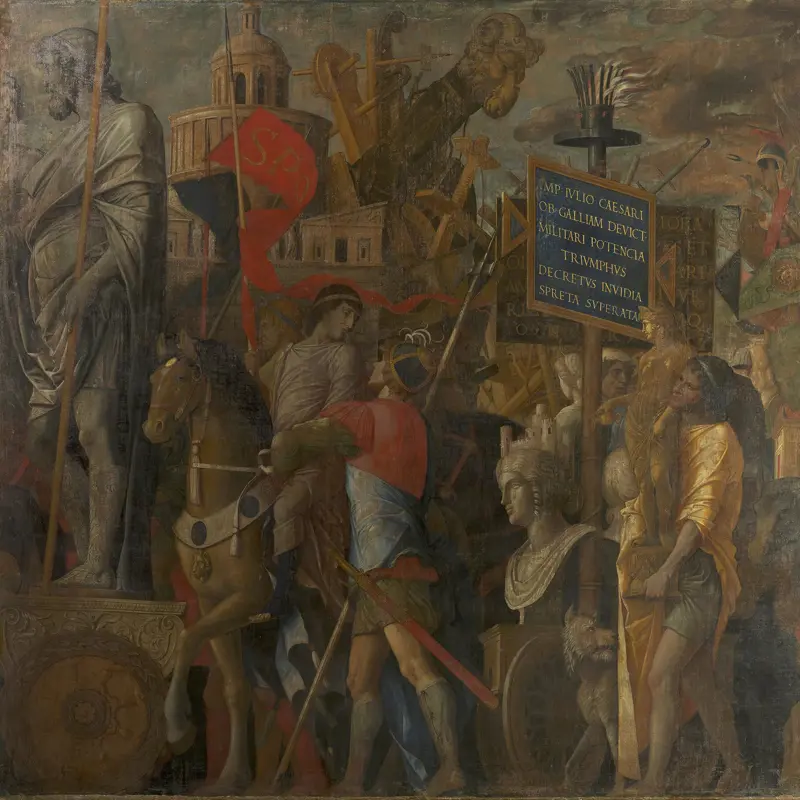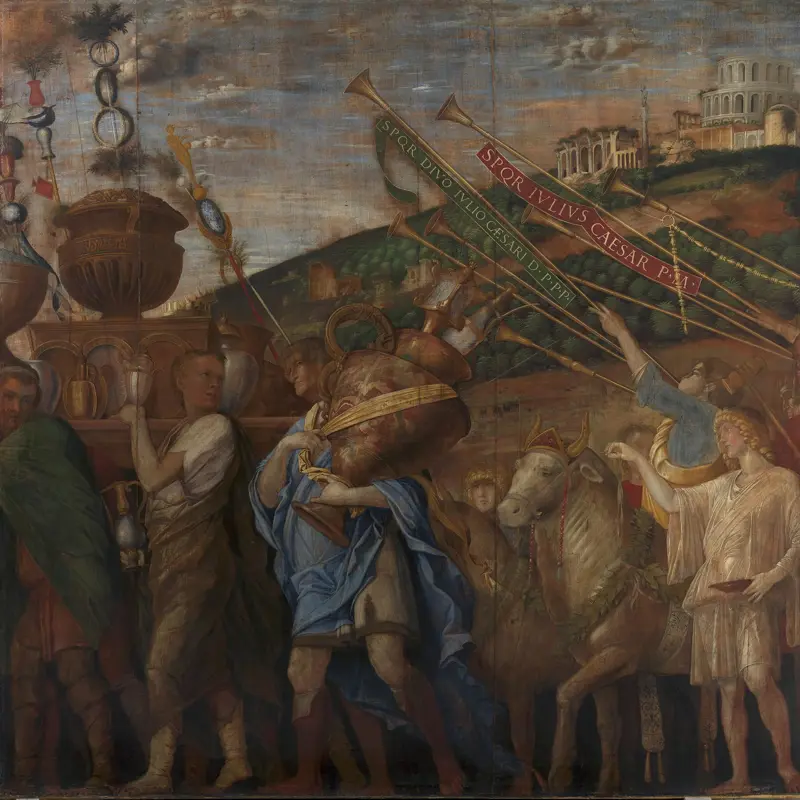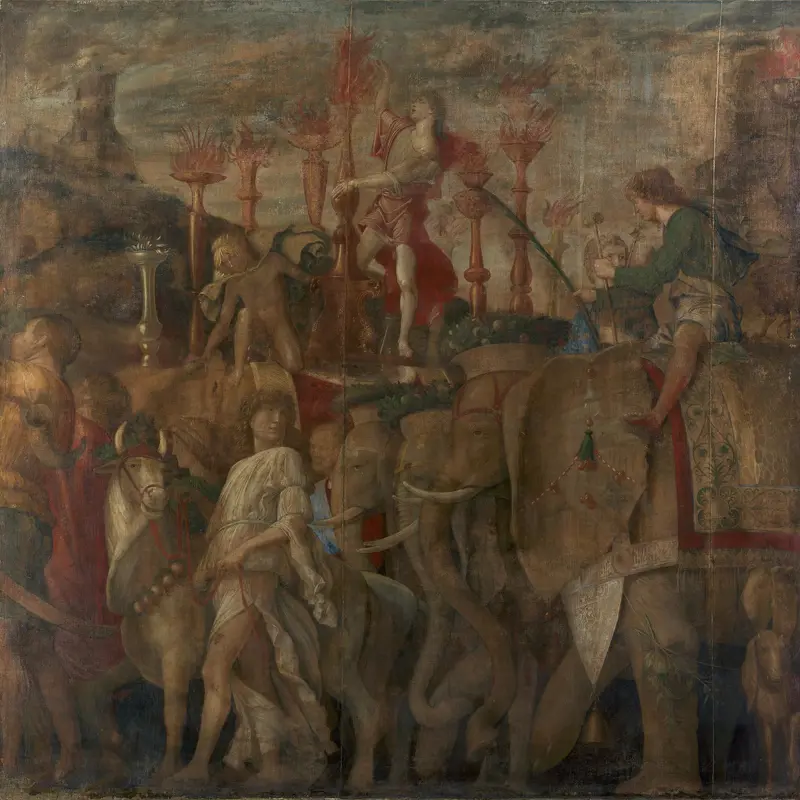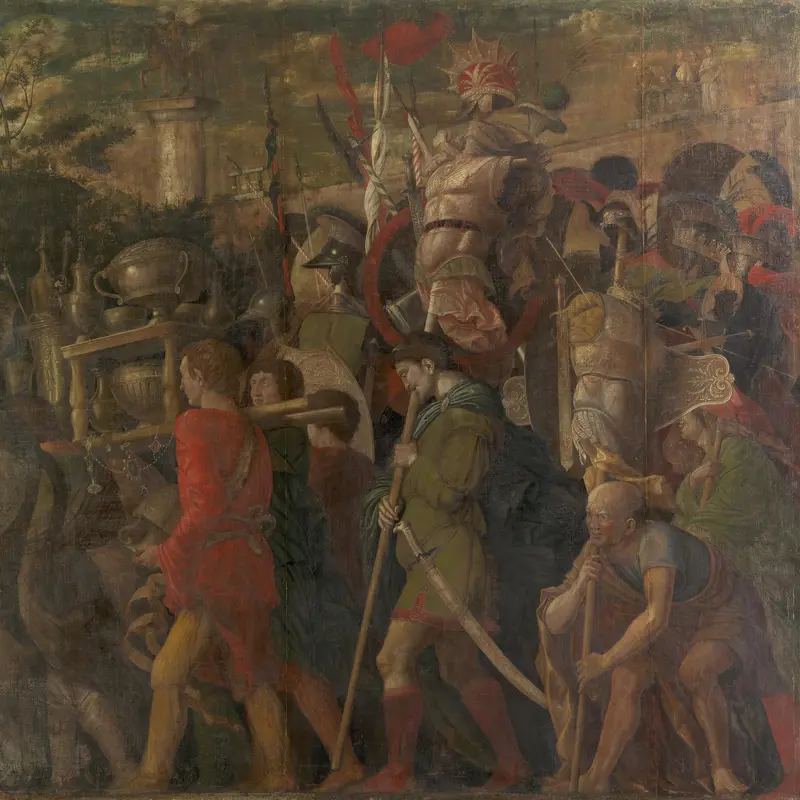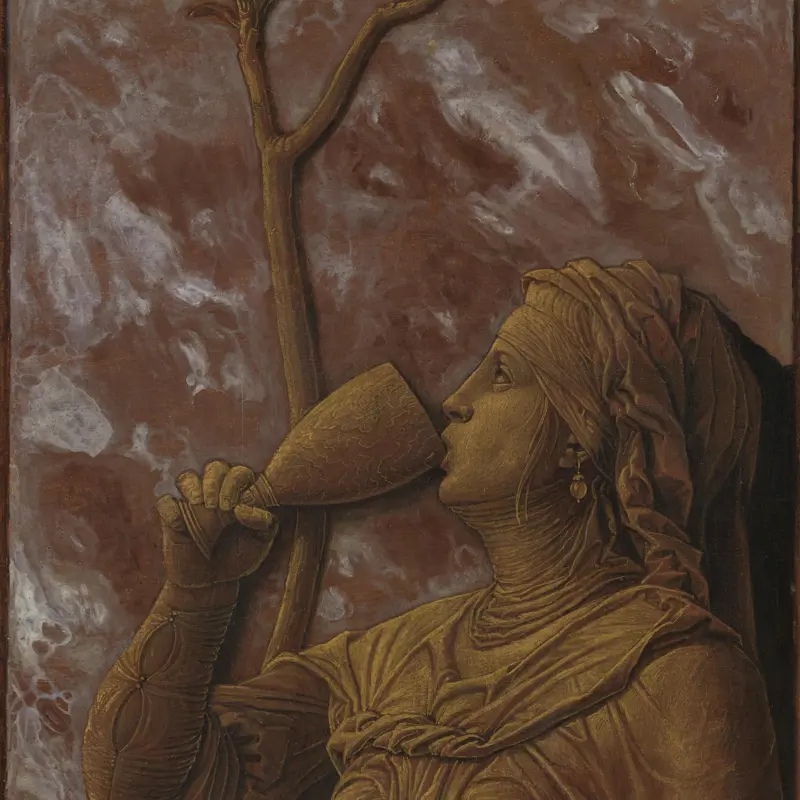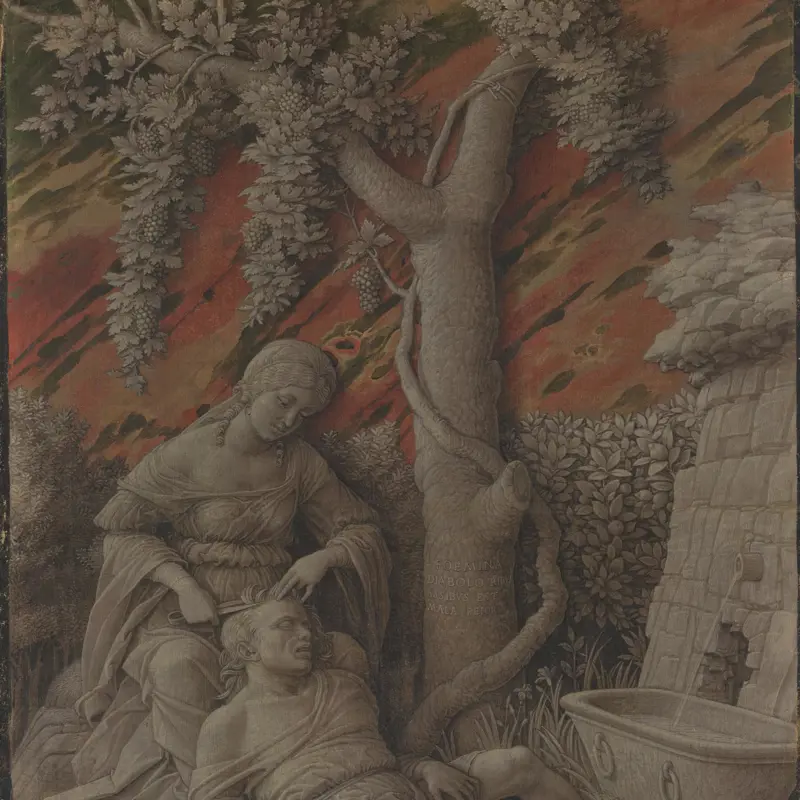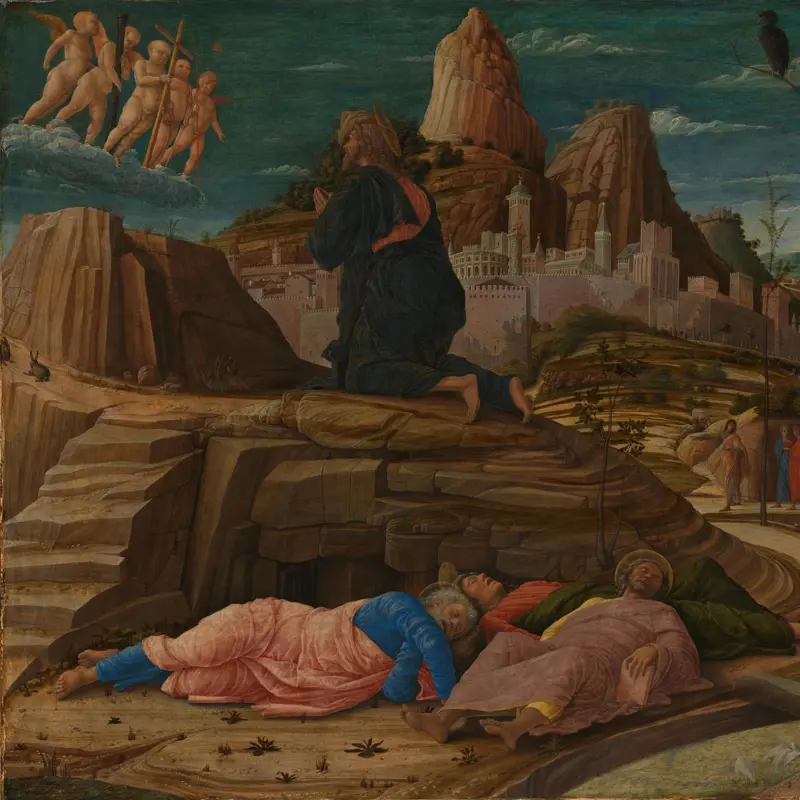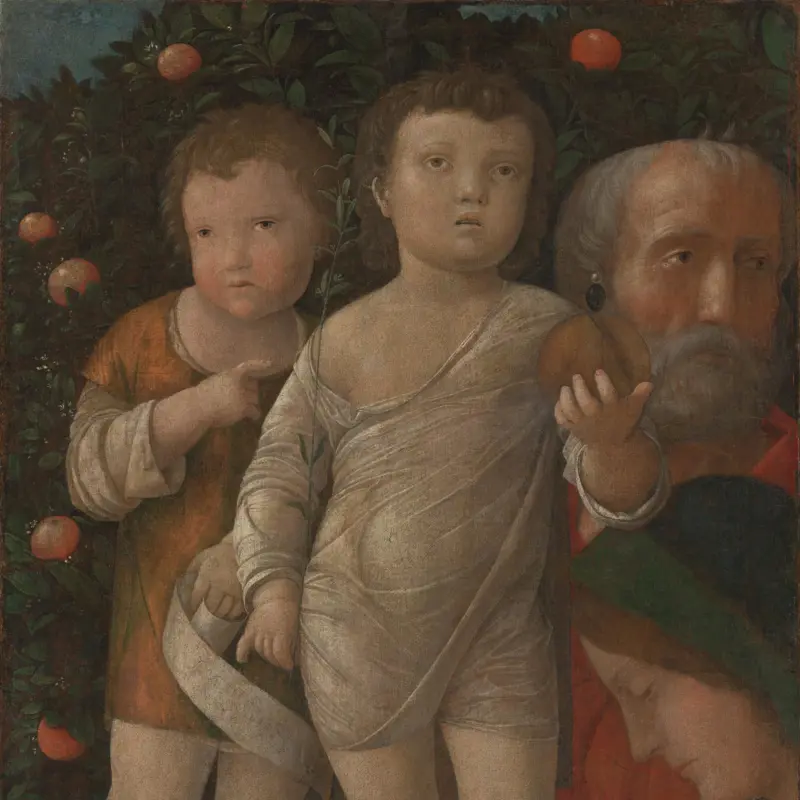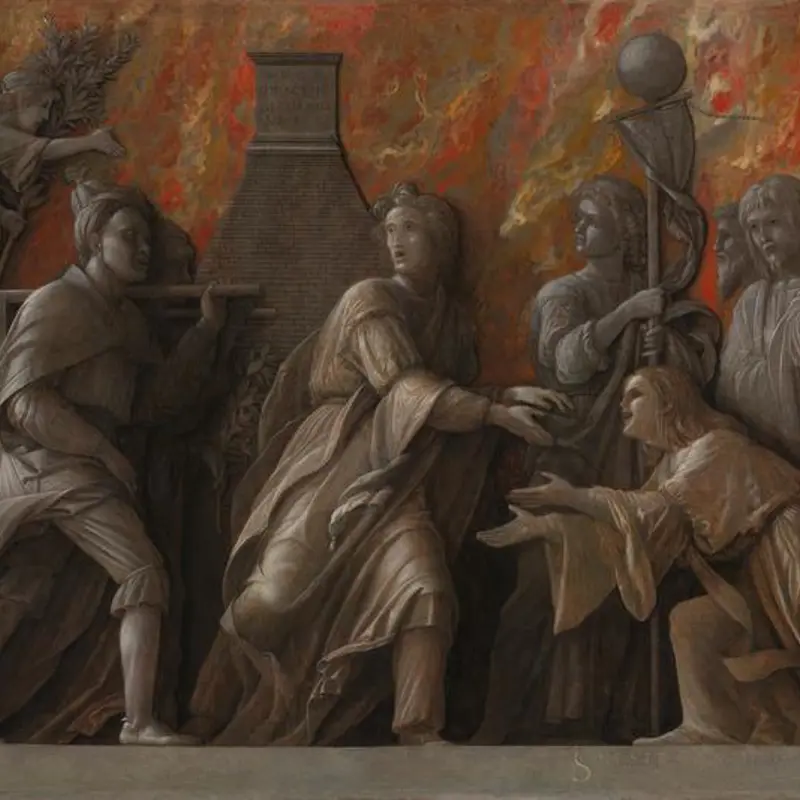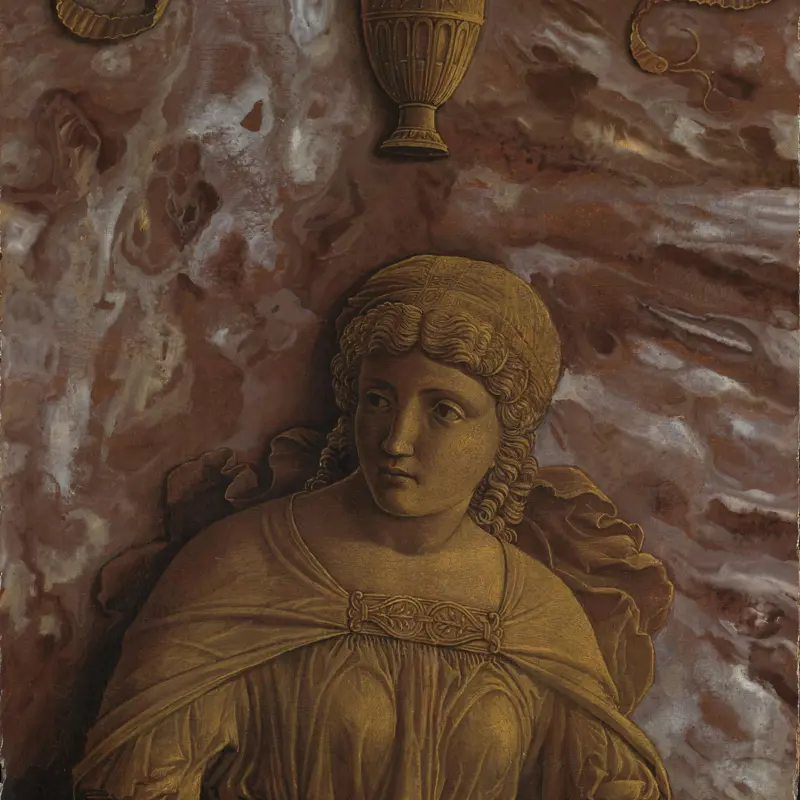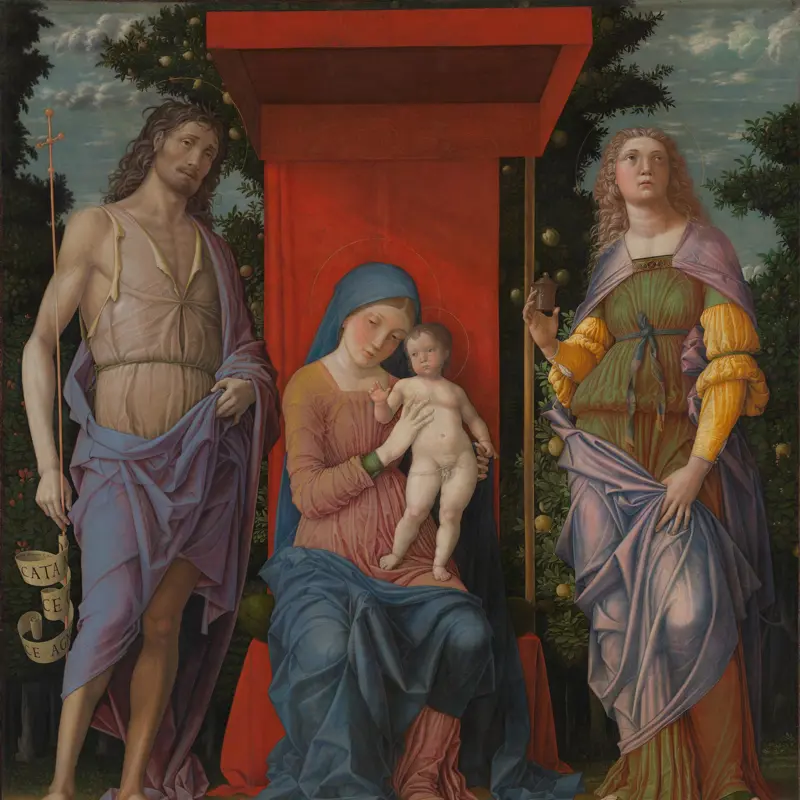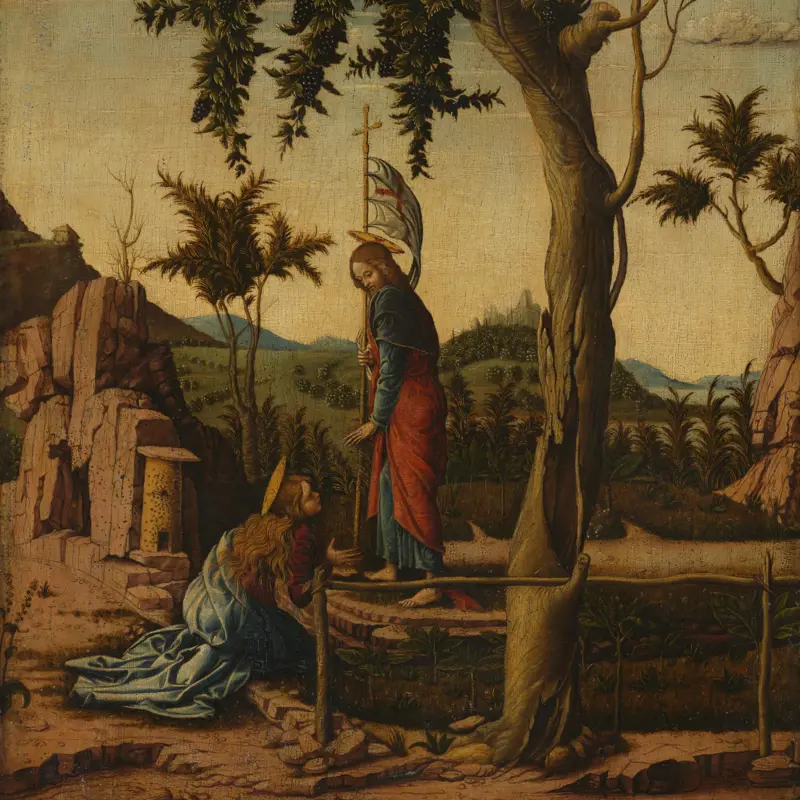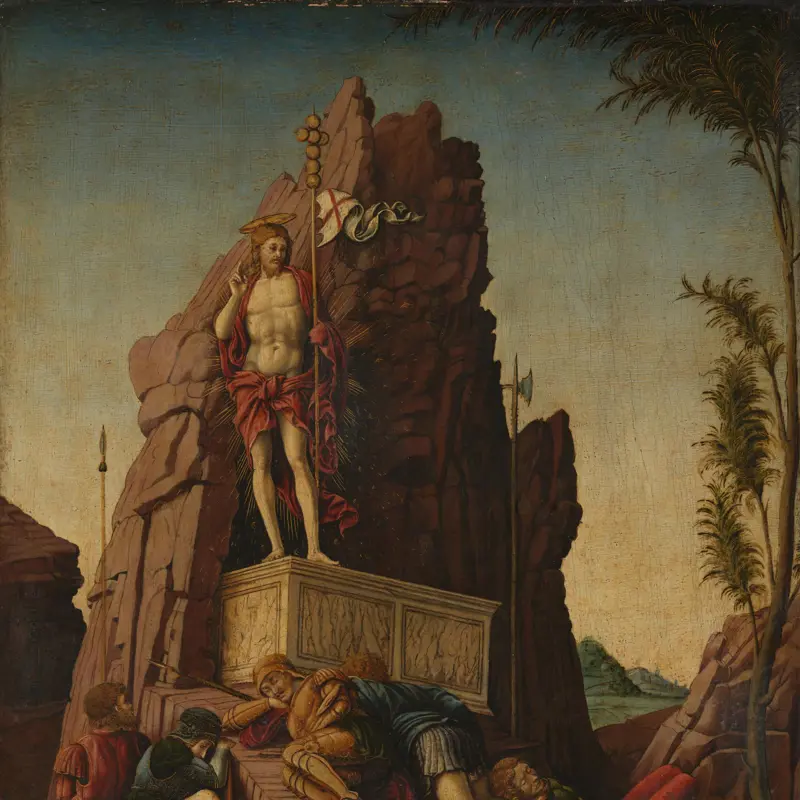Andrea Mantegna, 'The Triumphs of Caesar: 2, The Triumphal Carts', mid-1480s-before 1506
About the work
Overview
This canvas is the second of a series of nine painted by Andrea Mantegna depicting The Triumphs of Caesar.
In this scene, colossal full-length statues of Roman gods are transported on a richly ornamented cart, while a smaller one is lifted by a member of the entourage. An inscribed tablet praising Caesar’s victories in Gaul and his and military prowess is borne aloft behind the bust of the goddess Cybele, mother of the Greek Olympian gods. Appropriately for the military triumphs celebrated by the procession, weapons and armour are piled up on further carts pulled by horses and oxen. Among the imaginatively arranged siege machinery, a battering ram with a carved ram’s head stands out against the sky at the top of the composition.
Key facts
Details
- Full title
- The Triumphs of Caesar: 2, The Triumphal Carts
- Artist
- Andrea Mantegna
- Artist dates
- about 1431 - 1506
- Part of the series
- The Triumphs of Caesar
- Date made
- mid-1480s-before 1506
- Medium and support
- Egg tempera on canvas
- Dimensions
- 271.2 × 281.1 cm
- Inscription summary
- Inscribed
- Acquisition credit
- On loan from His Majesty The King
- Inventory number
- L1324
- Location
- Room 12
- Image copyright
- On loan from His Majesty The King, Royal Collection Trust / © His Majesty King Charles III 2023
- Collection
- Main Collection
About this record
If you know more about this work or have spotted an error, please contact us. Please note that exhibition histories are listed from 2009 onwards. Bibliographies may not be complete; more comprehensive information is available in the National Gallery Library.
Images
About the series: The Triumphs of Caesar
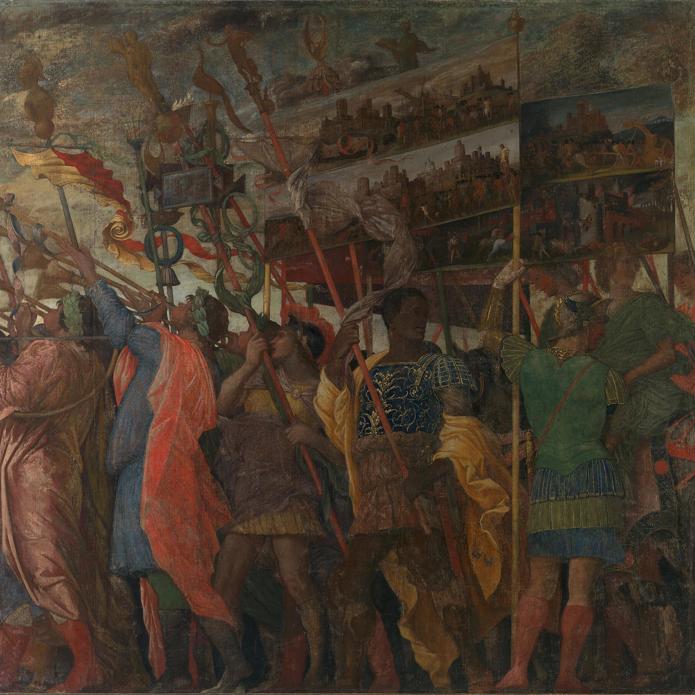
Overview
These are six of the nine monumental canvases known as The Triumphs of Caesar, painted by Andrea Mantegna between the mid-1480s and 1506. They depict a magnificent procession celebrating the victories of the Roman general – and later dictator – Julius Caesar over Gaul between 58 and 50 BC.
Mantegna embarked on this highly ambitious project when he was working as court painter for the ruling Gonzaga family in Mantua. He drew on ancient and contemporary writings for this powerful and sustained evocation of the classical world, as well as the imagery of Roman antiquities, such as friezes and monumental arches.
The Triumphs were acquired by King Charles I of England in 1629, when he purchased many Gonzaga treasures. Considered the jewel in the crown of the king’s paintings, they arrived in England the following year and were hung in Hampton Court Palace.
The Triumphs have since seldom left Hampton Court, but their dedicated gallery is now undergoing refurbishment (completion planned for 2026). Six of the nine are on display in the National Gallery, having been generously loaned by His Majesty the King.

